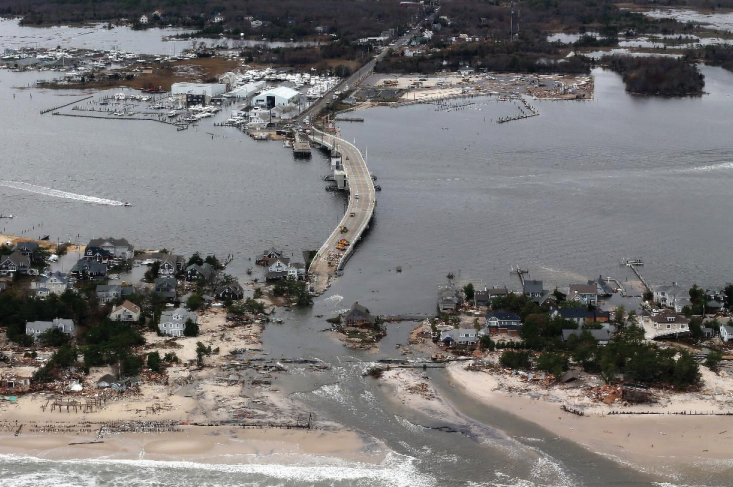In the event of a formal Governor’s proclamation of a disaster and Federal Highway Administration’s (FHWA) concurrence, it is important to understand how to access Emergency Relief funds provided through the FHWA. There is an important distinction to make between emergency repairs and permanent repairs that can affect funding eligibility.
- Emergency repairs are those repairs necessary during and immediately following a disaster to restore essential traffic and minimize the extent of damage {See U.S.C. 120(e)}. FHWA approval is not required, and repairs may begin immediately following a disaster. Repairs must be made within 180 days, and the Federal share is 100%.
- Permanent repairs are those repairs undertaken to restore the highway to its pre-disaster condition (usually after emergency repairs are complete). Permanent repairs must have prior FHWA approval and authorization unless done as part of the emergency repairs. The Federal share for permanent repairs on non-Interstate highways is 80%.
For potential emergency repair projects, damage inspection should occur immediately after the storm event. It is advisable to take pictures of the damage that occurred. Counties should immediately notify their NJDOT Local Aid District Office of locations where damage has occurred on Federal Aid Routes. In addition, MAP-21 legislation made a significant change regarding payment for debris removal. In short, if the President declares an emergency (Stafford Act), then debris removal will be paid for by FEMA, and FHWA funds will not be used.
MAP-21 Successor Legislation: Section 1107 of the FAST Act placed limits on the Emergency Relief eligibility for debris removal. As a result, under 23 U.S.C. 125(d)(3), in certain instances, debris removal previously eligible for Emergency Relief funding will only be eligible for FEMA funding. Four scenarios regarding debris removal eligibility following a natural disaster or catastrophic failure from an external cause may include, but are not limited to the following:
- The event is declared to be an emergency by the Governor, but there is no Presidential declaration of a major disaster under the Stafford Act. If the Federal Secretary of Transportation concurs with the Governor’s emergency declaration, Emergency Relief funds may be used for debris removal on eligible sites on Federal-aid highways in the same manner as before MAP-21. Emergency Relief funds will only be available in those counties included in the Governor’s emergency declaration and any amendments for the same event.
- The event is declared to be an emergency or a major disaster by the President under the Stafford Act and debris removal is eligible for assistance under sections 403, 407, or 502 of the Act. There may or may not be a Governor’s emergency declaration. FEMA will fund debris removal on affected highways, including Federal-aid highways, in accordance with FEMA’s Public Assistance Program. FHWA will not participate in debris removal costs, including any excess costs not covered by FEMA.
Federal Emergency
- The event is declared to be an emergency or major disaster by the President, but FEMA has determined that debris removal is not eligible for its assistance. In this case, FHWA Emergency Relief funds may be used for debris removal costs at eligible sites on Federal-aid highways for sites that FEMA has determined to be ineligible under its program. FEMA’s determination that the debris removal is not eligible under the Stafford Act will required documentation. Care should be taken to ensure that the reason for FEMA’s decision of ineligibility is not also a reason for Emergency Relief ineligibility.
- The event is declared to be an emergency or major disaster by the President and debris removal is eligible for assistance from FEMA. There is also a Governor’s emergency declaration, however, the Governor’s declaration covers more counties than the President’s declaration. If the Secretary of Transportation concurs with the Governor’s declaration, Emergency Relief funds may be used for debris removal costs on eligible sites on Federal-aid highways in the same manner as before MAP-21 for those sites subject to the Governor’s declaration, but not the President’s declaration.
FAST Act Legislation: Section 1107 of the FAST Act expanded debris removal eligibility to include projects located on tribal transportation facilities, Federal lands transportation facilities, or other Federally owned roads that are open to public travel (as defined in 23 U.S.C. 125(e)(1)). The change provides that debris removal resulting from a qualifying event on these facilities is Emergency Relief-eligible, even if the President has declared a major disaster or emergency under the Stafford Act (42 U.S.C. 5121 et seq.).
The change does not affect debris removal eligibility for Federal-aid roads owned by States and sub-recipients.
Additional guidance on the FAST Act provisions affecting the Emergency Relief Program can be found on FHWA’s website at https://www.fhwa.dot.gov/ specialfunding/er/fastact_qa.cfm, NJDOT Local Aid’s website at http://www.state.nj.us/transportation/ business/localaid/er.shtm and in FHWA’s Emergency Relief Manual at http://www.fhwa.dot.gov/reports/erm/er.pdf.
If you have any questions, please contact Deven Patel at 609-963-2008.
